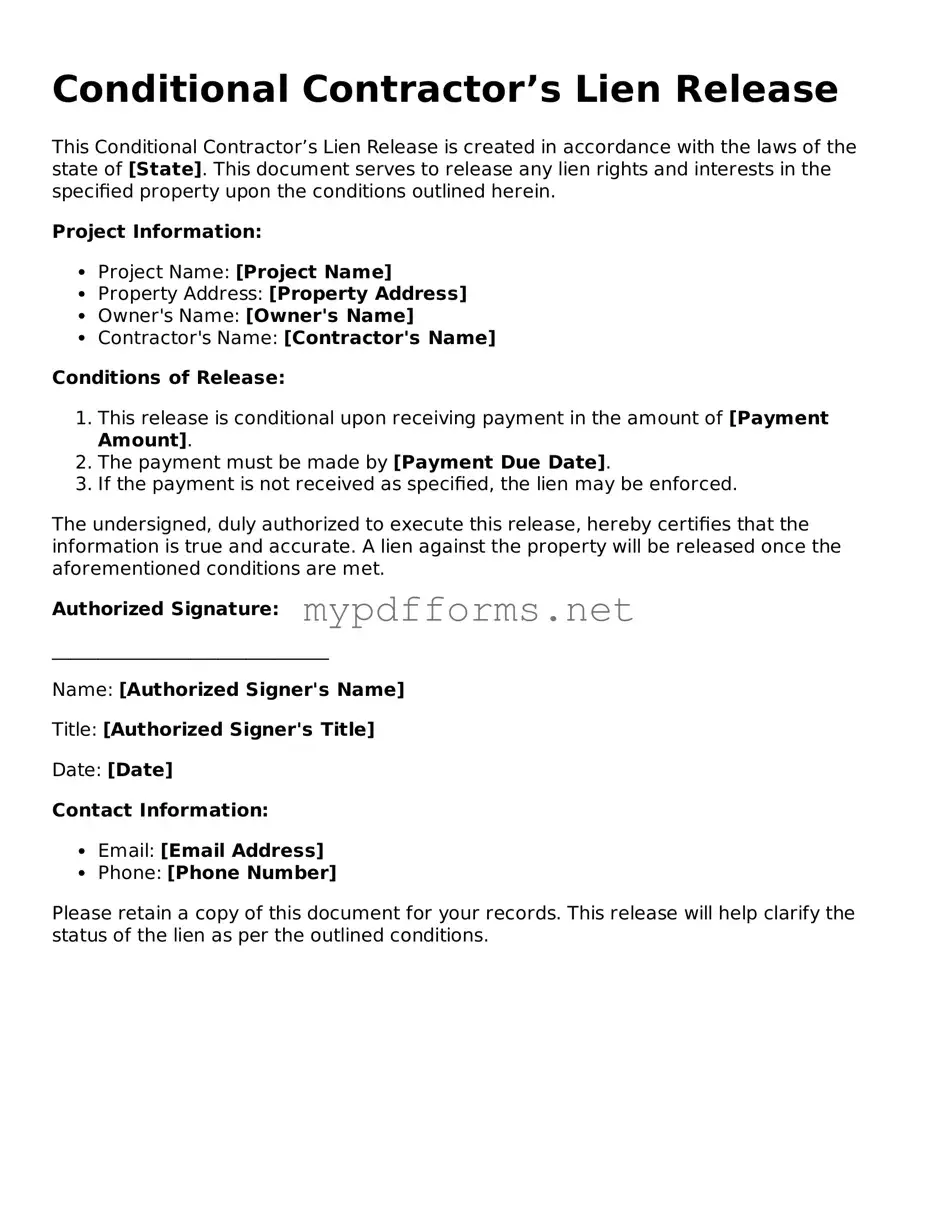-
What is a Conditional Contractor’s Lien Release form?
A Conditional Contractor’s Lien Release form is a legal document that a contractor or subcontractor uses to relinquish their right to file a lien against a property, provided that they receive payment for their work. This form protects property owners by ensuring that they will not face a lien claim if payment is made.
-
When should I use this form?
You should use this form when you are a contractor or subcontractor who has completed work on a property and you are about to receive payment. By signing this form, you conditionally release your lien rights, assuring the property owner that they will not face any claims as long as you receive your payment.
-
What information is required on the form?
The form typically requires the following information: the name and address of the contractor, the name and address of the property owner, a description of the work performed, the amount due, and the date of the payment. Make sure all details are accurate to avoid any disputes.
-
Is this form legally binding?
Yes, once signed, the Conditional Contractor’s Lien Release form is legally binding. It indicates that the contractor agrees to release their lien rights upon receipt of payment. However, it is important to ensure that the payment is actually made for the release to be effective.
-
What happens if I do not receive payment?
If you do not receive payment after signing the Conditional Contractor’s Lien Release form, you may still have the right to file a lien against the property. However, this depends on the specific terms outlined in the form and local laws. Always consult with a legal expert if you find yourself in this situation.
-
Can I use this form for partial payments?
Yes, the Conditional Contractor’s Lien Release form can be used for partial payments. In this case, you would specify the amount being released and note that the lien rights for the remaining balance are still intact until full payment is received.
-
Do I need a witness or notarization for this form?
While it is not always necessary to have a witness or notarization for the Conditional Contractor’s Lien Release form, doing so can add an extra layer of protection. Check your state’s requirements, as some jurisdictions may have specific rules regarding the execution of such forms.
-
What should I do with the completed form?
Once completed and signed, you should provide a copy of the Conditional Contractor’s Lien Release form to the property owner and retain a copy for your records. This ensures both parties have documentation of the lien release and the terms agreed upon.
-
Can this form be revoked?
Generally, once the Conditional Contractor’s Lien Release form is signed and payment is made, it cannot be revoked. However, if the payment is not honored or if there are discrepancies, you may want to seek legal advice on your options.
-
Where can I obtain this form?
You can obtain a Conditional Contractor’s Lien Release form from various online legal document providers, local legal offices, or construction industry associations. Ensure you are using a form that complies with your state’s laws and regulations.
